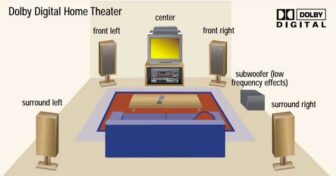Solve Laptop – Projector SETUP PROBLEMS
You’re ready to give your presentation, but until that first slide appears on the big screen, you can never be sure that your equipment has got your back. We can’t tell you not to worry, but these handy tips should help bail you out if your presentation goes south.
➤HARDWARE & CABLE CONNECTIONS
It can be difficult to track down the source of problems that occur when connecting a notebook and projector. Following are some things to watch for.
Video.Turn off all equipment and connect your notebook’s video out port to the projector. The usual connection choices for a notebook are VGA (Video Graphics Array), DVI (Digital Visual Interface), HDMI (HD Multimedia Interface), and DisplayPort. Many projectors have VGA and one or more digital connections. If possible, use a digital connection for high quality.
Sound.Some HDMI and DisplayPort digital video connections can carry audio through the same port, but both notebook and projector must support audio over the digital video connection. Traditionally, audio is connected using the notebook’s audio out jacks and the projector’s audio in ports; both of these are often RCA or 3.5mm. If you’re not using the projector’s built-in speakers, make sure you connect your notebook’s audio out to the sound system you intend to use and turn the volume down on the projector’s speakers.
Mouse.If you are using a mouse, or a remote mouse controller, make sure the controller/mouse is connected, usually through the notebook’s USB port. If you are using a wireless device, make sure the notebook has the appropriate wireless connection enabled. This is typically Bluetooth or a USB port wireless dongle.
➤NETWORK CONNECTION
Many venues supply network projectors, which are made available as a shared resource. Making a connection to a network projector is as easy as plugging your notebook into the corporate network via wired or wireless Ethernet. Check with the company’s IT staff for specifics. Once connected, use the network connection wizard in Windows 7 to find the projector you wish to use:
- Click Start (the Windows button in the bottom-left corner of the screen).
- Click All Programs.
- Click Accessories.
- Click Connect To A Network Projector.
➤The network connection wizard may inform you that your notebook’s firewall is blocking the ability to connect with the projector. Click to establish the network connection.
➤Either have the wizard search for available network projectors or enter the projector’s address manually if it is available. Once connected, a Network Presentation window will minimize to your Taskbar. When you’re ready to make your presentation, open the Network Presentation window and select Resume. Your notebook will treat the network projector like an external monitor.
➤NO VIDEOIn many cases, your notebook will detect that you have a projector plugged into one of its video outputs and will automatically turn on the port. Not all notebooks do this, however; and even those that do can still have missing video if the notebook isn’t set to duplicate the Desktop or extend it to the secondary monitor (the projector). Many notebooks use a function key combination to toggle the projector port on or off and set how you can use the display. We recommend using the control panels in Win7:
- Right-click a blank area on the Desktop.
- Select Screen Resolution.
- Select the second display from the drop-down menu.
- Select Extend These Displays from the Multiple Displays drop-down menu.
Your Desktop background should now appear on the projector. Win7 also has a pop-up display for selecting the content that is sent to the projector. Press the Windows-Pkeys to bring up the four possible selections:
- Computer only (turns the projector display off)
- Duplicate (mirrors your computer’s Desktop on the projector)
- Extend (uses the projector as an extension of your Desktop)
- Projector only (turns off your notebook’s display and uses the projector as the main display).
➤VIDEO IS OUT OF RANGE
When the projector can’t reconcile a video signal from a notebook with its preset resolution, it displays an out-ofrange message. To solve this in Win7:
- Right-click a blank area on the Desktop.
- Select Screen Resolution.
- Select the display associated with the projector.
- Use the resolution drop-down menu to adjust the resolution to the correct value. Try 800 x 600 or 1,024 x 768 as these are resolutions that many projectors can handle.
➤DISPLAY TURNS OFFIf the projector’s display turns off during your presentation, check your notebook’s power management feature, especially if you’re running the notebook off of its battery. Whenever possible, use your AC adapter to run your notebook.
➤VIDEO WON’T DISPLAY OR IS CHOPPY
Your slide presentation works fine, but when you try to show a video, all you see is a blank window or a choppy rendition of the video. Trying to display a video on two monitors can be too much for a video card that has marginal graphics capabilities. If video isn’t displaying correctly, change the Display settings to make the projector the primary display.






